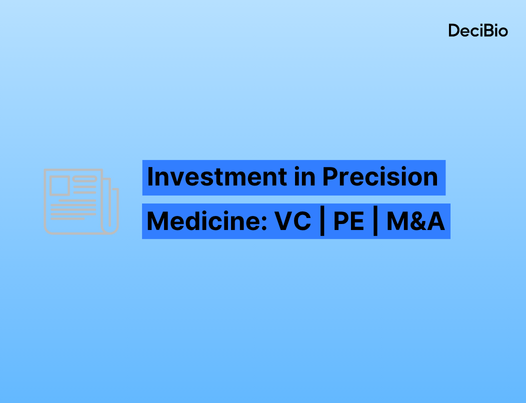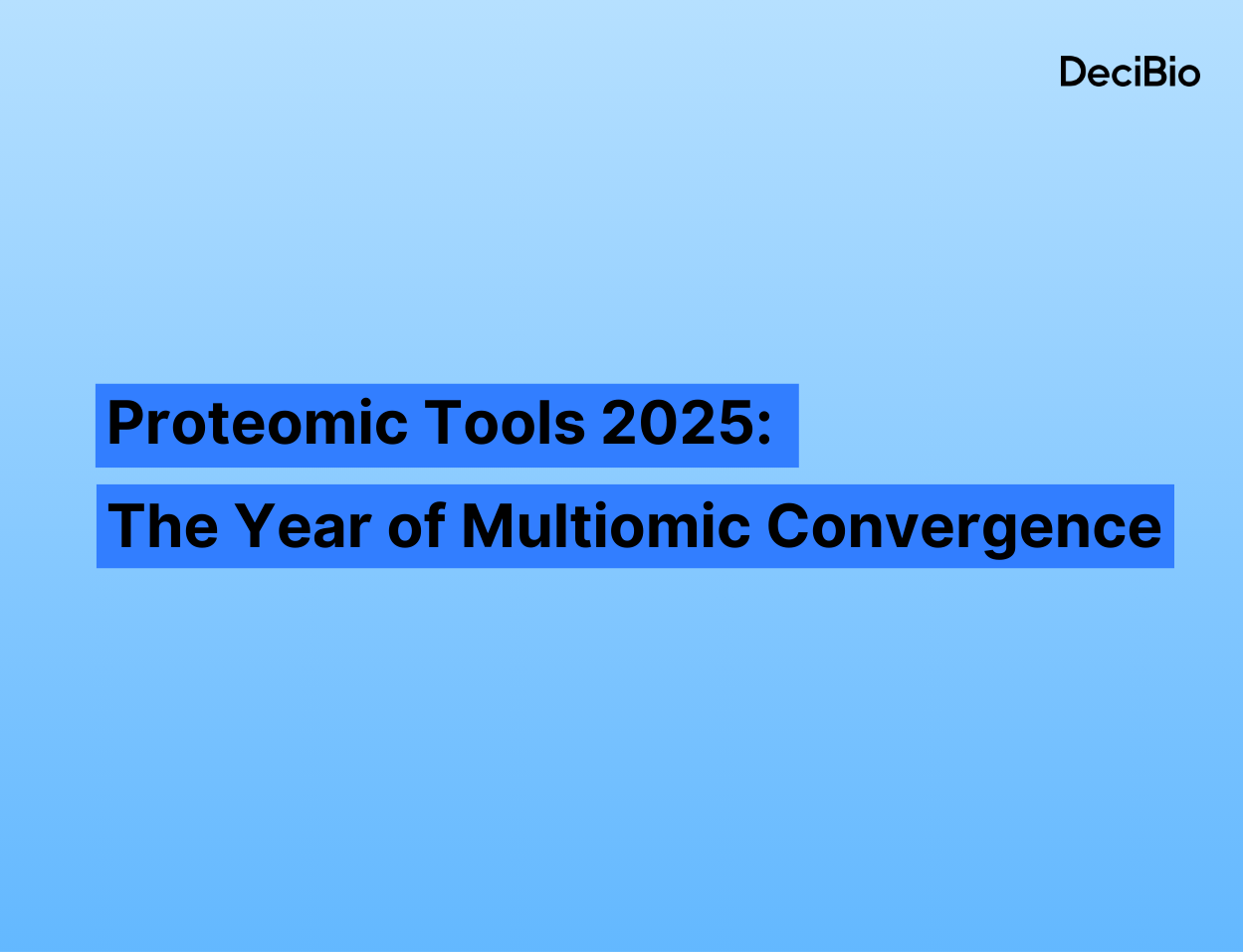Key Takeaways:
- Radiomics has seen a rapid increase in research, growing from fewer than 100 studies in 2016 to over 3,100 in 2023, reflecting heightened interest and potential applications across various medical fields including oncology, cardiology, and neurology
- Biopharma is increasingly leveraging radiomics in clinical trials and translational research to interrogate patient response and stratification, with more companies building ‘radiomics’ groups alongside traditional pathology and imaging
- Radiomics tools developers are leveraging modern deep learning-based approaches, but they are not without their challenges, notably surrounding curating proper datasets
- Focusing on the downstream clinical use case is top of mind; for Akshay, this involves prioritizing appropriate FDA clearance / approval, ensuring novel tools are compatible with all care settings, and involving all relevant clinician perspectives (not just from radiologists) at every step of the process
Akshay, could you share a bit about your background and about Onc.AI?
Absolutely. My background is in computer engineering with an MBA, and I have spent about 15 years in oncology. Before founding Onc.AI, I co-founded Reflection Medical focused on developing novel equipment to improve the delivery of cancer treatment. This machine integrates PET imaging, or molecular imaging, with external beam radiation therapy into a single device. The system is now clinically treating patients and represents a significant advancement in oncology treatment. After spending 10 years there, I transitioned out of the company and started Onc.AI, where I currently serve as CEO.
Onc.AI aims to radically transform oncology decision-making for both physicians and pharmaceutical clinical development using radiomics and AI. We are a venture-funded Series A company, with approximately $30 million invested. Notably, we are backed by the venture arm of Blue Cross Blue Shield, known as Blue Venture Fund, Action Potential, the venture arm of Glaxo, and several strong financial investors.
This discussion is part of a series we're doing on radiomics. To start, how do you define ‘radiomics’?
The strict definition of radiomics is the extraction of quantitative imaging features from an imaging scan, such as CT, MRI, PET-CT, or ultrasound, and using those features to solve a particular predictive or prognostic task. This can involve predictions and insights around a variety of disease areas. The idea is that embedded within a diagnostic imaging scan, there is more information than what even a trained radiologist can detect.
How do you characterize the state of radiomics adoption today, both in research and clinical settings? What are some of the key use cases and applications?
If you conduct a quick PubMed search for radiomics, you'll notice a significant increase in activity. In 2016, there were only 94 entries. By 2023, this number had surged to over 3,100. It appears that 2024 is on track to surpass that record.
There has been an explosion of research work in academia surrounding radiomics, covering a variety of disease areas such as cardiovascular, neurology, and of course oncology. However, there have been fewer commercial successes and products that have transitioned into clinical use. While Onc.AI aims to change this landscape, there are several companies that are making significant strides and have developed bona fide products that are impacting clinical care outside of oncology. Many of these companies have FDA-cleared products that are often reimbursed and generate substantial revenue. These companies are successfully leveraging radiomics, achieving commercial traction and success in the field.
I would love to discuss how biopharma is using radiomics to support their translational and clinical efforts. What are some of the applications and use cases pharma is exploring?
We have a unique take on this because we have three active research collaborations with major players in the big pharma category and are currently engaged in many discussions with other players as well.
What makes radiomics particularly interesting and attractive to biopharma is its noninvasive nature, quick turnaround, and the ability to leverage existing scanning work. It also allows for retrospective analysis of clinical trial data, which is more challenging with tissue samples. All these factors combine to make radiomics a very interesting area for big pharma and biopharma, and we hope this trend continues.
We've observed a variety of applications and needs, starting with enrichment. This involves using radiomics as a computational assay or biomarker to identify patients who might be better or poorer responders, with the goal of using this computational assay for label expansion or for selecting the right patients. This interest in radiomics for such applications is growing, similar to what we've historically seen with genomics or proteomics, like an IHC assay.
Other applications include rapid patient screening, where radiomics, being noninvasive and based on existing CT scans, is used to preselect patients likely to express a certain mutation. Another compelling application is enhancing drug development decisions beyond the traditional RECIST protocol, which relies on comparing baseline and follow-up scans to measure tumor changes. This approach, while having merit, is decades old and could benefit from advanced imaging analytics offered by radiomics.
Over the past four years, we've seen the mindset of biopharma change as more data has been published, requiring us to do less convincing. We're even seeing large companies forming internal radiomics teams alongside pathology and biomarker or translational imaging groups.
In traditional studies, there's a need to go back and find the samples, facing issues with sample storage and quality. However, with radiomics, as mentioned, you essentially only need the image. That value seems more clear, but what other challenges does biopharma face and why can it be challenging for biopharma groups to build on their own?
The challenge that Onc.AI has addressed, which other companies still struggle with, involves clinical trials. For instance, a phase 1 or phase 1b study might involve only 80 to 100 patients, providing a limited amount of data. Training and validating a model with such a small dataset makes it difficult to distinguish signal from noise. In oncology, and similarly in other disease areas, some companies have invested in acquiring and developing a large dataset they own, which is meticulously labeled and curated. Building radiomic models on this foundation allows for their application to existing clinical trials. Starting with a clean slate and no data makes radiomics particularly challenging. Research studies have shown that building a convincing, generalizable model from a 100 to 200 patient radiomic study is difficult. Therefore, a significant challenge for biopharma is addressing the data issue, especially when applying radiomics to datasets that, even in a phase 3 study, might comprise at most 500 patients.
Regarding solving the data issue, I'm curious about the extent to which recent advancements in AI and ML have helped or assisted you in that regard.
Regarding the relationship between AI and data, the field is moving from traditional radiomics to deep learning-based approaches. Traditional radiomics involves hand-curated features and a series of steps including normalization, segmentation, and simple feature selection. This contrasts with modern deep learning techniques, where features are learned and extracted from the data itself, requiring large datasets but offering superior performance and accuracy. Onc.AI is committed to leveraging these modern techniques in our products, focusing on large datasets, generalizability, and performance.
One challenge with deep learning is explainability, as these modern deep learning models can act as "black boxes." It’s hard to pinpoint exactly where your signal is coming from or why things are working. However, we believe there are effective methods to address this issue that we’ve implemented along with others.
I also wanted to inquire about parallel developments with the imaging modalities themselves. As CT scans and ultrasounds improve do you see the work that you do changing?
Onc.AI's strategy has been to not focus too much on advancements in image quality, such as the latest in CT or MRI scanning technologies. This is because we aim for our models to generalize and be effective in community settings, where equipment may not be the latest models from companies like GE and Siemens. You’ll get that at UCSF, Stanford, or MD Anderson, but you won’t have that in the community. While image quality can improve model performance, relying on the latest technology does not align with our goal of generalization.
From my limited experience with deep learning and neural networks, one aspect I've noticed as crucial in developing a system capable of effectively detecting tumors is the AUC measurement, or the relationship between false negatives and false positives. This is because, in a large dataset, the majority of the entries will not contain tumors. Therefore, if a model consistently responds with "no detection," it might still achieve a high accuracy rate in tests. And so, how does Onc.AI address the challenge of having relatively few tumor samples in a given dataset?
The crux of it is that the prevalence of what you're trying to detect significantly impacts the size of the data you need to acquire and even the approach you use. Therefore, investing in the data asset, curating it, and ensuring it matches the clinical application you're trying to build is just as important, if not more so, than the advanced deep learning approach you employ. It is a challenge, but I believe it can be overcome through thoughtful and careful attention to your data asset.
Switching gears a bit, what are some of the challenges and barriers experienced when translating these tools from research into the clinic and patient care?
Certainly, availability and accessibility of data, along with the breadth of that data asset, are crucial. If you aim to build products for clinics or community cancer centers, generating robust clinical evidence is essential. Treating the product like a medical device or diagnostic and obtaining FDA clearance when appropriate are critical steps. This level of rigor is important for clinical adoption, and the most successful companies in this space have demonstrated a strong commitment and investment in this area.
Integration with hospital EMR, PACS, or other hospital IT systems, is another area where top performers have excelled, achieving usability and integration into clinical workflows. It's not sufficient to have a well-performing radiomics AI. Ensuring that the physician can easily order it, acquire the necessary imaging data without burden, and then seamlessly push the report back to the physician is vital.
Additionally, there is some skepticism among clinicians, particularly in oncology, to overcome. For instance, our end user is a medical oncologist, not a radiologist, who may not be accustomed to relying on imaging data. These clinicians are more familiar with blood-based or tissue-based tests, and sending samples to a central lab. However, with compelling and robust evidence as our AI models are translated from research to clinical use, we are confident that oncologists will become enthusiastic supporters.
Radiomics sits at the intersection of various fields, especially within oncology, where there are numerous stakeholders to engage. How do you weigh the importance of the interdisciplinary aspects?
I think it starts with the company formation. How do you ensure that your team is built around a multidisciplinary philosophy? At Onc.AI, we have incredible medical oncologists who have been with us since incorporation. They have helped design the product and are iterating with us on performance characteristics and clinical utility, guiding where we point this capability. It extends to our management team and members who have a wealth of experience in oncology software, computer vision, liquid biopsy, and drug development. We have a diverse management team that has experience thinking through the challenges clinical stakeholders face and make sure our solution addresses their needs. These are individuals with years of experience in the imaging field or years marketing and selling to oncologists. You really have to build out a team internally that is not just focused on imaging or computer vision. You certainly need that talent, but you also have to check the other boxes.
I'm curious about how you see radiomics integrating into the broader diagnostic journey for clinical decision-making like therapy selection and response prediction. Additionally, you mentioned striving to be agnostic towards the advancement of imaging technologies to ensure your solutions are applicable across a wide spectrum of care. Does your vision for the integration of radiomics into the diagnostic process vary across care settings - for example between academic centers vs. community settings?
Great set of questions. I should first clarify that we view these tools as adjunctive in nature. We are not attempting to replace physician judgment but rather to complement it. Alongside their experience and judgment, physicians will consider other sources of information, such as lab values, pathology-based tests, and genomic testing. Radiomics could serve as another pillar in the overall treatment decision-making process for physicians and also be part of the toolkit for pharmaceutical companies. We see a significant opportunity here, especially with the rise of precision oncology and the complexity of integrated cancer care, which includes a multitude of systemic therapies and the increasing use of local therapy in combination with systemic therapies. These factors present unique opportunities for radiomics, a modality that benefits from the ubiquity of imaging data. This data is present at every stage: screening, baseline, and patient follow-up, providing a substrate to leverage with modern AI techniques. Though we’re initially focused on lung cancer, we see how radiomics can extend to other cancer types and different settings, potentially moving from metastatic to earlier stage disease. There is substantial literature supporting this notion. Starting with non-small cell lung cancer, we envision broad applicability wherever imaging is conducted, with radiomics complementing the imaging process.
Regarding your last question about whether we are doing anything differently for the community versus an academic center, the answer is no. Our goal is for our products to be generalizable and used widely, both domestically and internationally. Our partnership with academia may focus more on clinical research, but the FDA-cleared products used at a Stanford will be the same as those used at community cancer centers.
My last question is more forward-looking. How do you expect the radiomics landscape to change over the next 5 years? What trends and developments are you most excited about?
I see a shift towards deep learning, with larger datasets being used for model training and validation becoming broadly available. In my view, the smart investment is in modern deep learning techniques. I also see radiomics being integrated with other modalities such as genomics, labs, and liquid biopsy, working in tandem. This could lead to the development of multimodal AI models with potentially stronger performance. In oncology, I believe there will be opportunities for radiomics to augment and complement imaging data wherever imaging is conducted. This means, hopefully, for Onc.AI and the industry, utility across all stages of cancer and all tumor types.
For Onc.AI, we would love to demonstrate the clinical utility of our approach and its scalability to other tumor types and therapeutic classes. Our publications primarily focus on checkpoint inhibitors in non-small cell lung cancer, where we have observed strong performance and high clinical utility. We have early data suggesting that our approach can be applied to other tumor types and potentially extend to other therapeutic classes. We are eager for this data to strengthen and to showcase its utility in these areas. We’re also particularly enthusiastic about launching our first product, introducing it to medical oncologists, and proving that a radiomics solution has a place in clinical practice.
Comments and opinions expressed by interviewees are their own and do not represent or reflect the opinions, policies, or positions of DeciBio Consulting or have its endorsement. Note: DeciBio Consulting, its employees or owners, or our guests may hold assets discussed in this article/episode. This article/blog/episode does not provide investment advice, and is intended for informational and entertainment purposes only. You should do your own research and make your own independent decisions when considering any financial transactions.









